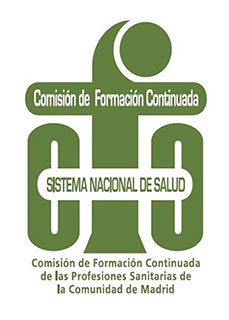Course on Communicating to Motivate Others

How to communicate to influence and motivate others
When we communicate, we do so for the purpose of influencing others. But, in addition to this influence, we must ensure that we achieve collaboration and involvement voluntarily and efficiently.
Only in this way will we achieve the collaboration and participation so necessary between professional and patient in the health sector.
Curriculum
Communicating to Motivate Others
The characteristics of the interlocutor in the communication process
- Characteristics of effective communication
- Initial impact: impact and predispose.
- Arouse interest: argumentation.
- Connect: make them live experiences.
- Most frequent typologies (VAK):
- Visual, auditory and kinesthetic dominances.
The message's structure depending on the interlocutor (AVRA)
- Preparing the message:
- Approaches to action and content structure (AV).
- The relational ways of preparing the speech:
- Approaches to the relationship.
- Approaches to innovation.
High-impact presentations
- Visual contents. Selecting images:
- Metaphorical images.
- Rhetorical analogies.
- Verbal content. Words:
- Keywords and strength words.
- Gestural content. Opening, closing, empathy and movement.
The speech as Storytelling
- Choosing the story to tell:
- The starting situation (need).
- The arrival situation (result).
- The construction of the narrative-discourse:
- The plot of the speech.
- The sequence.
- The closing in an effective speech.
Professors
 Alejandro Martín Revilla
Professor
Alejandro Martín Revilla
Professor
More Academic Info
Aimed at:
Competences
At the end of the course, the student will have acquired the knowledge and skills to:
- 1. Analyze the characteristics of the interlocutor to adapt your message.
- 2. Adapt the way of communicating in each situation in which you find yourself.
- 3. Prepare presentations efficiently.
- 4. Plan the speech, considering the objections that may exist.
- 5. Develop a story that helps us communicate our messages.
Objectives
- Its purpose is to develop the necessary skills to adapt communication to the interests and characteristics of the interlocutor, and to be able to interact effectively in public.
- Some keys are to identify the perceptual domains of the interlocutor, choosing the metaphors to communicate complex content and using storytelling to transmit it.
Methodology
Duration of 12 teaching hours, 4 sessions of 3 teaching hours. The course is taught online through the virtual classroom of Nebrija Global Campus. The lectures scheduled in a calendar previously communicated to the students are broadcast live with the professor's initial teaching presentation and later an interaction with the students to answer questions and pose clinical cases.
The evaluation of the Course will address the following aspects:
- The student follows the teaching content.
- The student will have to take a multiple-choice exam (40 questions, 5 possibilities with only one valid answer), and will need 60% of correct answers to obtain the certificate of achievement to guarantee the assimilation of concepts and the fulfillment of the objectives.
- Post-training assessment survey on satisfaction of expectations.


